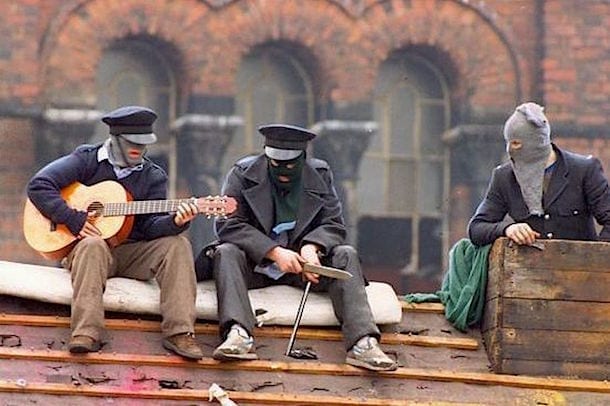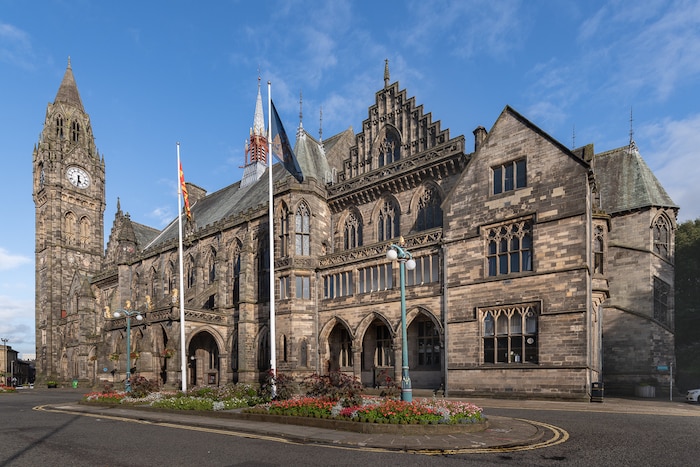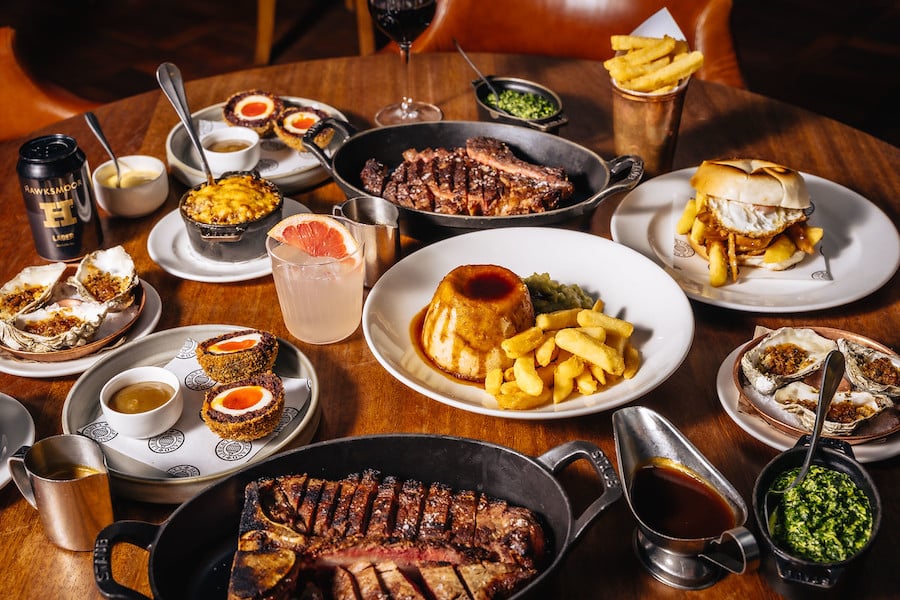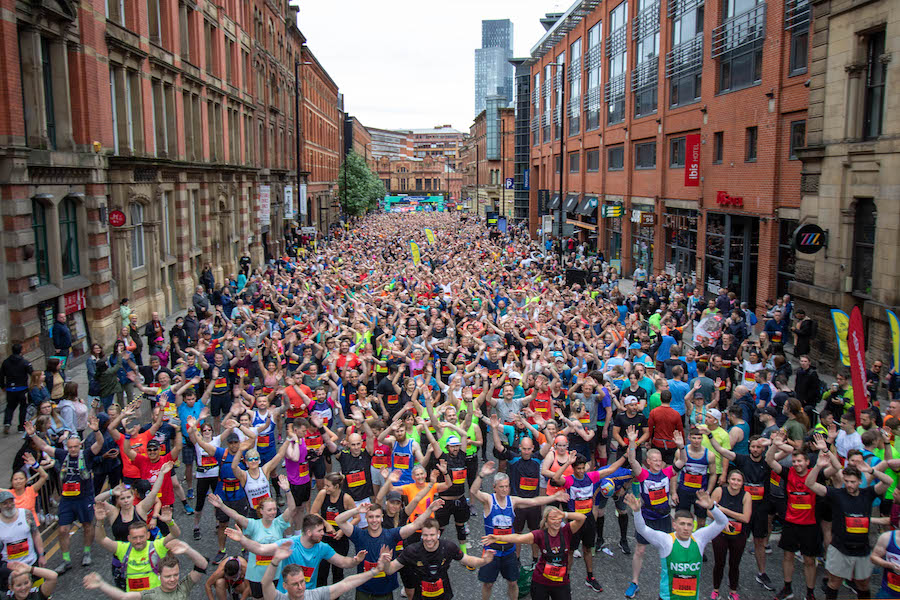The birth of human rights in Manchester
- Written by Ed Glinert
- Last updated 1 year ago
- Cornerstone, Culture, History
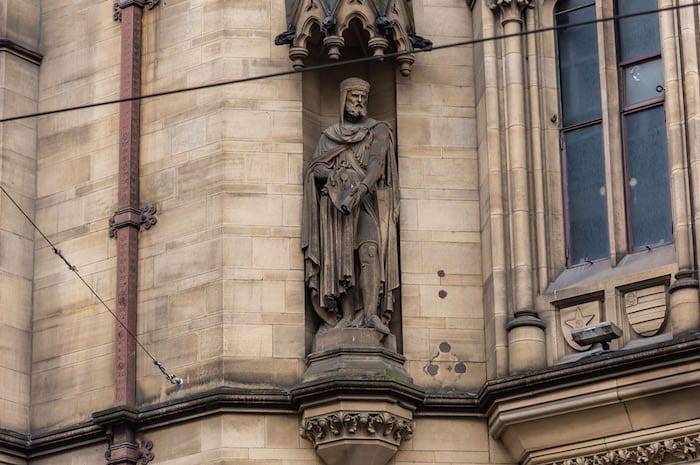
It’s over 200 years since Peterloo, the most dramatic and violent event in British political history. A crucial incident in the battle for civil and political rights.
A hundred years later, Manchester was at the centre of another intense political campaign – the bid to get votes for women.
So it is apt that outside the Town Hall, the home of Manchester democracy, there is a statue of a man holding a stone representation of the Magna Carta, a cornerstone in the story of how people fought for basic civil rights.
The statue is of Robert de Gresley, a 13th century Lord of the Manchester Manor – the man in charge of the town in those pre-democracy days.
Robert de Gresley (1174-1230) was the first Lord of the Manchester Manor to live locally, probably where Chetham’s now stands. In 1215, he was one of the barons who confronted King John at Runnymede and forced him to sign the royal charter of rights, the Magna Carta, which promised the protection of church rights, protection for the barons from illegal imprisonment, access to swift and impartial justice, and limitations on feudal payments to the Crown, to be implemented through a council of 25 barons. The first form of human rights.
Although records for who controlled Manchester in ancient times are sketchy, the Gresley family was in control of the growing town for around two hundred years.
After the Norman Invasion of 1066, William the Conqueror gave an area known as the Salford Hundred to a favourite baron, Rogier de Poitevin.
De Poitevin later handed the land to Albert de Greslé (also known as Greslet or Gresley) who became the first Baron of Manchester. The Gresleys brought with them their coat of arms – a red shield with three gold stripes to show they were a religious family. The red represented the blood of Christ, the gold was from the Old Testament verse: “The silver is mine, and the gold is mine, saith the Lord of hosts” (Haggai 2:8).
Strangely, every book on Manchester history, including the famed Red Book which the council published when the Town Hall was opened in 1877, cites the statue as being that of Thomas de Gresley, a descendant a hundred years later. However, the name Robert can clearly be seen written on the statue.
To find out more about the history of the city through its sites, signs, symbols, statues, settings, join tour guide and author Ed Glinert on one of his New Manchester Walks. More information on the website.
- This article was last updated 1 year ago.
- It was first published on 22 February 2019 and is subject to be updated from time to time. Please refresh or return to see the latest version.
Did we miss something? Let us know: [email protected]
Want to be the first to receive all the latest news stories, what’s on and events from the heart of Manchester? Sign up here.
Manchester is a successful city, but many people suffer. I Love Manchester helps raise awareness and funds to help improve the lives and prospects of people across Greater Manchester – and we can’t do it without your help. So please support us with what you can so we can continue to spread the love. Thank you in advance!
An email you’ll love. Subscribe to our newsletter to get the latest news stories delivered direct to your inbox.
Got a story worth sharing?
What’s the story? We are all ears when it comes to positive news and inspiring stories. You can send story ideas to [email protected]
While we can’t guarantee to publish everything, we will always consider any enquiry or idea that promotes:
- Independent new openings
- Human interest
- Not-for-profit organisations
- Community Interest Companies (CiCs) and projects
- Charities and charitable initiatives
- Affordability and offers saving people over 20%
For anything else, don’t hesitate to get in touch with us about advertorials (from £350+VAT) and advertising opportunities: [email protected]

Strangeways could be home to thousands – but there’s one big problem in the way

Review: Glorious! at the Hope Mill Theatre celebrates our individuality







